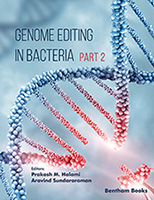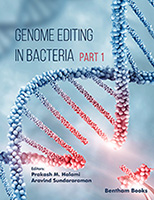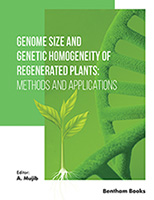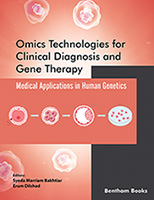Preface
This fourth volume of the Advances in Genome Sciences continues the tradition of the previous volumes in bringing together a range of comprehensive and cutting edge reviews that present the exciting recent advances in this important field. This volume features updates of reviews published earlier in Current Genomics. The first 3 chapters cover specific types of human diseases followed by reviews on RNA research, fungal genomics and plant genomics.
The first chapter by Butler on current information about Prader-Willi Syndrome (PWS), a rare trisomy which can lead to childhood obesity. It summarize the clinical features, current understanding of genetic causes and natural history with clinical presentation of individuals suffering from PWS. In the second chapter Franze’ et al. provide an overview of recent developments regarding pathogenesis of syndromic deafness with an emphasis on relevant clinical genotype-phenotype correlations. Effects of some mutations on channels function and the relevant role of the hemichannel are discussed. These genetic defects can result in syndromic skin diseases and deafness. The Italian team led by Antonelli et al. discuss the use of tyrosine kinase inhibitors (TKIs) for thyroid cancer therapy. Tyrosine kinase inhibitors (TKIs) inhibit the process of auto-phosphorylation and activation by tyrosine kinases and they are emerging as new therapies against aggressive TC, including differentiated thyroid cancer (DTC), medullary thyroid cancer (MTC) and anaplastic thyroid cancer (ATC).
Chapter 4 by Dostie et al. review the known lncRNA transcription regulation activities. They also discuss the potential mechanisms by which ncRNAs might exert three-dimensional transcriptional control and the recent studies that have revealed new facts about their role in shaping the human genome.
The next chapter by Mate and Alcalde comprehensively reviews the progress on genetic engineering of laccase enzymes of Saccharomyces cerevisiae and other fungi. Fungal laccases are biocatalysts with a wide range of potential applications that extending from bioremediation to novel green processes. Fuelled by molecular oxygen, they can oxidise many different types of substrates including xenobiotic compounds (pesticides, industrial dyes, PAHs), biopolymers (lignin, starch, cellulose) and other molecules. The authors discuss the efforts to convert fungal laccases into valuable biomolecular platforms on which new functions can be incorporated by directed evolution.
In the next chapter Aceto and Gaudio describe the processes involves in orchid genetics and evolution. This review presents a couple of significant genetic models such as the ABCDE model and MADS-box model which can be used to engineer different varieties of these plants. In chapter 7, Leister et al. present a review on the genome of Arabidopsis thaliana with particular emphasis on the present status of resources and concepts for systematic studies of gene function in A. thaliana. Current perspectives on the utility of loss-of-function and gain-of-function mutants are discussed in light of the genetic and functional redundancy of many A. thaliana genes. In the final chapter by Wani et al., the authors review certain advanced applications of plant genetics, viz. engineering cold-stress tolerance in plants. Numerous physiological and molecular changes occur during cold acclimatization which indicate that the phenomenon of cold resistance is more complex than perceived and involves a number of pathways. This research area presents an interesting avenue for agriculture in temperate regions where the cold climate limits the production of agricultural products.
I hope that the series of chapters in this volume will stimulate readers to learn more about how the genome of living organisms shapes their existence in our world and how it opens up new possibilities for developing untapped resources for the benefit of mankind.
I would like to express my gratitude to all the authors for their excellent contributions. I would also like to thank the entire team of Bentham Science Publishers, particularly Mr. Omer Shafi (Assistant Manager Publications), Mr. Shehzad Naqvi (Senior Manager Publications) and team leader Mr. Mahmood Alam (Director Publications) for their excellent efforts. We are confident that this volume will receive wide appreciation from students and researchers.
Atta-ur-Rahman, FRS
Honorary Life Fellow
Kings College
University of Cambridge
Cambridge
UK





